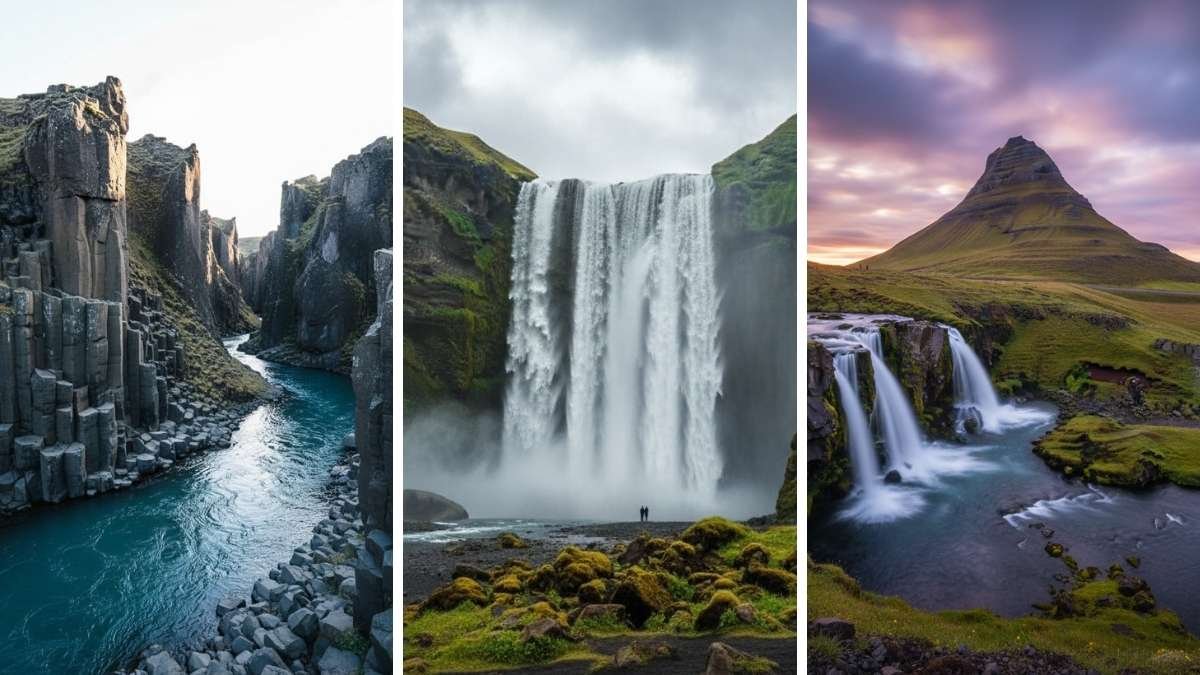
There’s a reason so many filmmakers chase Iceland’s horizons — the country doesn’t just sit quietly on screen; it moves. It shifts colors, moods, and light faster than you can process, turning a simple landscape into something that feels almost alive.
From volcanic deserts that breathe heat to glassy lagoons where silence carries weight, every corner feels charged with story. These aren’t just backdrops; they’re scenes waiting to unfold — wild, cinematic, and unapologetically real.
Here are ten places across Iceland that blur the line between the world we know and the one that only exists in dreams.
1. Vestrahorn Mountain, Stokksnes
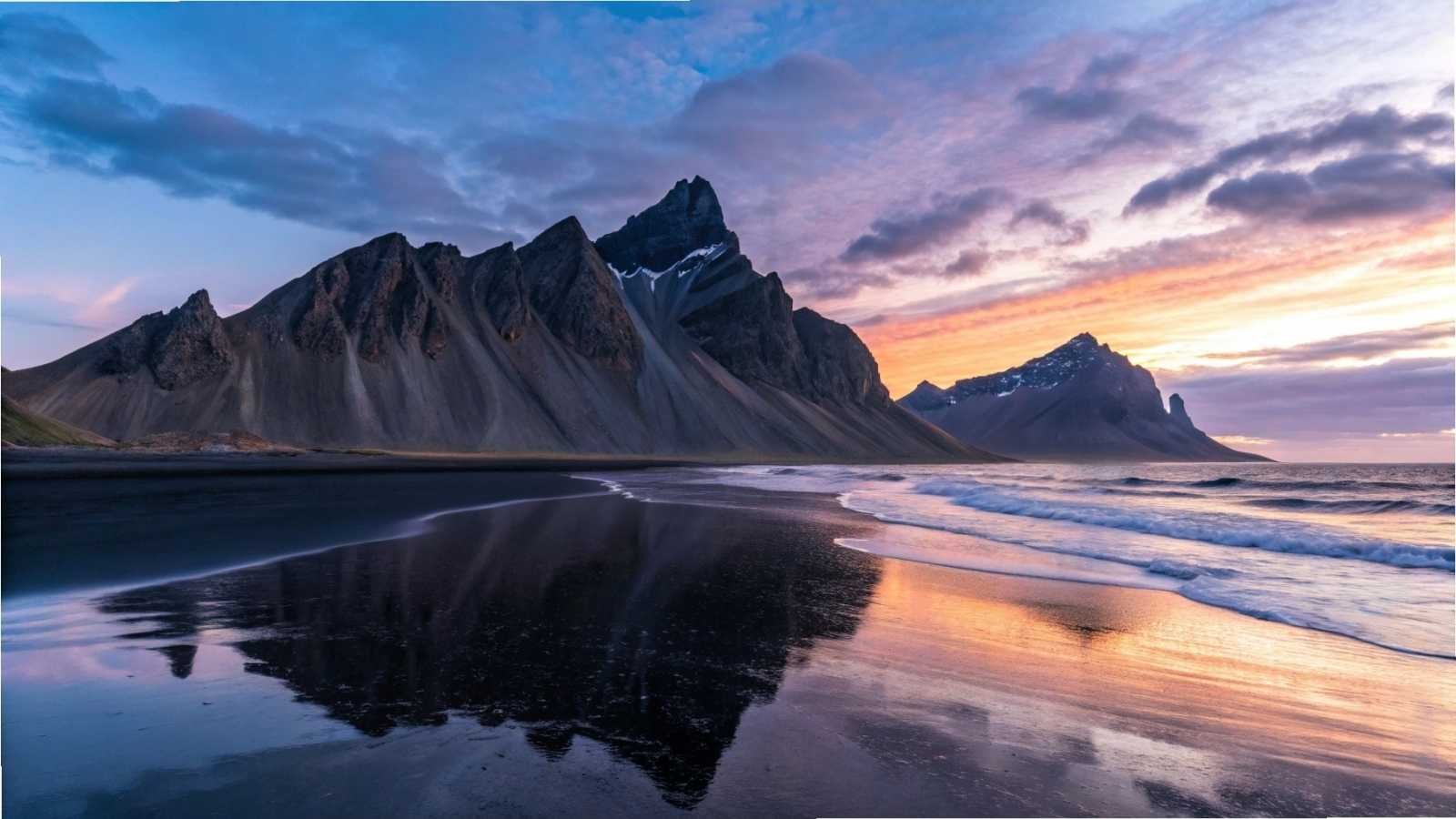
Vestrahorn looks like something ripped straight from a fantasy film — jagged peaks rising dramatically from black dunes, with the North Atlantic waves crashing at their feet. Located on Iceland’s southeastern coast near Höfn, this 454-meter-tall mountain is often nicknamed “Batman Mountain” for its sharp, cinematic silhouette. It’s one of those rare places that can shift its mood entirely depending on the light — golden hues at sunrise, misty blues at dusk, and moody reflections on the wet sands after a storm.
The landscape feels almost otherworldly — a mix of volcanic black sand, tufts of sea grass, and mirror-like tidal pools that reflect the mountains perfectly. It’s no wonder filmmakers and photographers are drawn here; every angle feels like a movie scene. Whether it’s covered in snow or washed in summer’s soft light, Vestrahorn never looks the same twice — and that unpredictability adds to its magic.
There’s a quiet solitude about this place, too. Apart from a few horses grazing in the distance or the occasional traveler with a camera, it’s just you and the wind. It’s one of those rare Icelandic spots where you can stand still for a moment and feel the weight of time and nature all around you.
Quick Notes:
- The best months to visit are May to September for accessibility and clear skies, and November to February for the Northern Lights.
- Nearest town: Höfn (about 20 minutes away).
- Photography tip: Visit during low tide for mirror-like reflections.
- Access fee: Small entrance fee to the private road leading to the beach.
- Movie vibes: Think Game of Thrones meets The Northman.
2. Jökulsárlón Glacier Lagoon
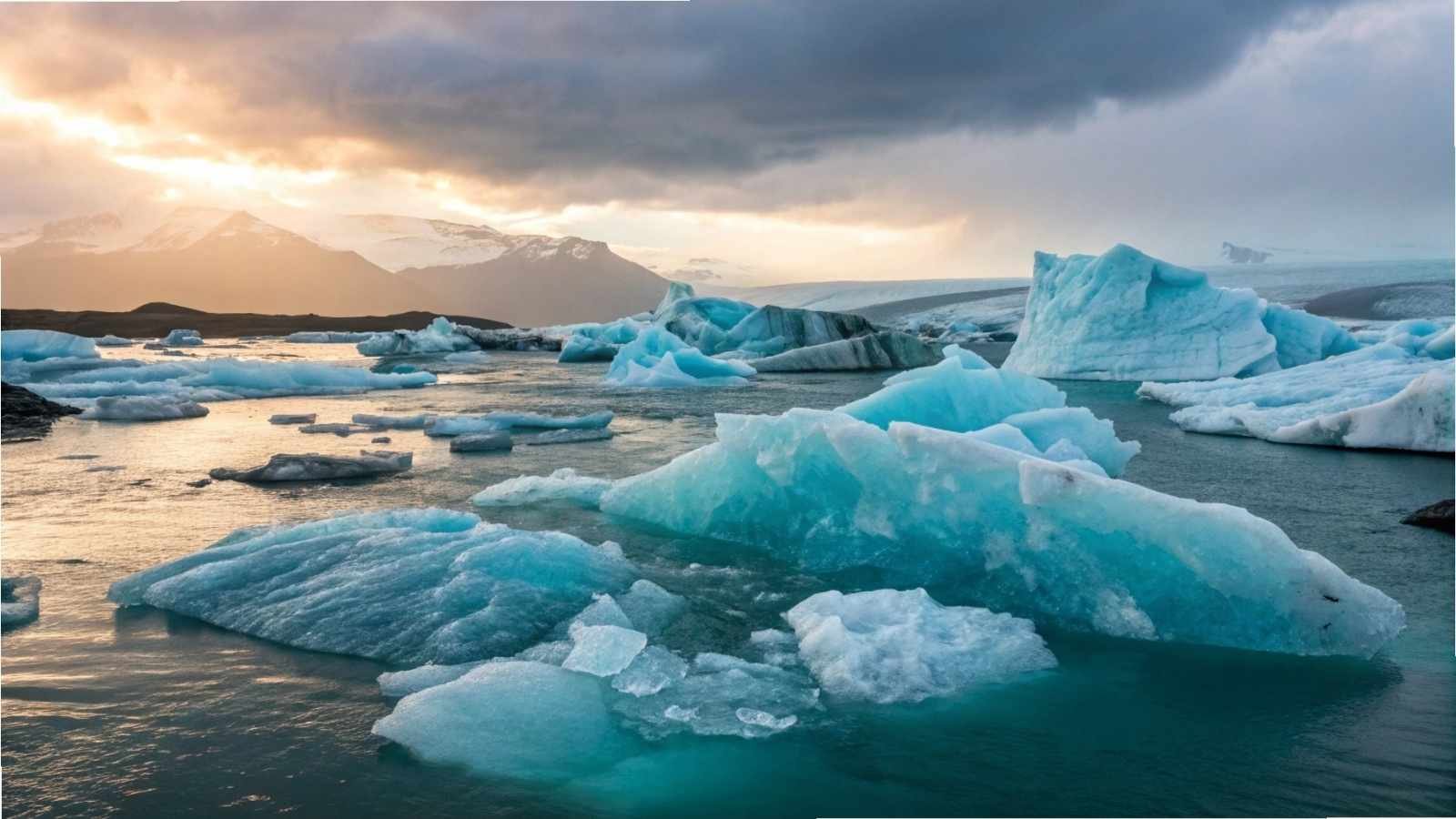
Few places in the world can make you feel as small — and as awestruck — as Jökulsárlón. This massive glacial lagoon, situated at the edge of Vatnajökull National Park, is filled with floating icebergs that have broken off from the Breiðamerkurjökull glacier. The ice drifts slowly toward the ocean, glowing blue, white, and even turquoise under the Icelandic sun. It’s a moving, living landscape — literally.
As you stand on the shore, you’ll hear the ice crack and shift, sometimes toppling over as it melts. Seals often swim between the chunks of ice, and nearby, Diamond Beach sparkles with bits of glacier ice that wash ashore. The contrast between the black volcanic sand and the translucent ice is mesmerizing — it’s no wonder filmmakers used this setting for Batman Begins and Die Another Day.
Whether you take a zodiac boat tour among the icebergs or simply walk the shoreline, it feels cinematic in every sense. And when the Northern Lights appear over the lagoon on a clear night — refracting over the ice — it’s something you won’t forget.
Quick Notes:
- Best months to visit: June to September for boat tours; December to March for icy textures and aurora views.
- Nearest town: Höfn (about 1 hour away).
- Boat tours: Zodiac and amphibious tours available.
- Bonus stop: Visit Diamond Beach just across the road.
- Famous film credits: Interstellar, Tomb Raider, Batman Begins.
3. Fjaðrárgljúfur Canyon
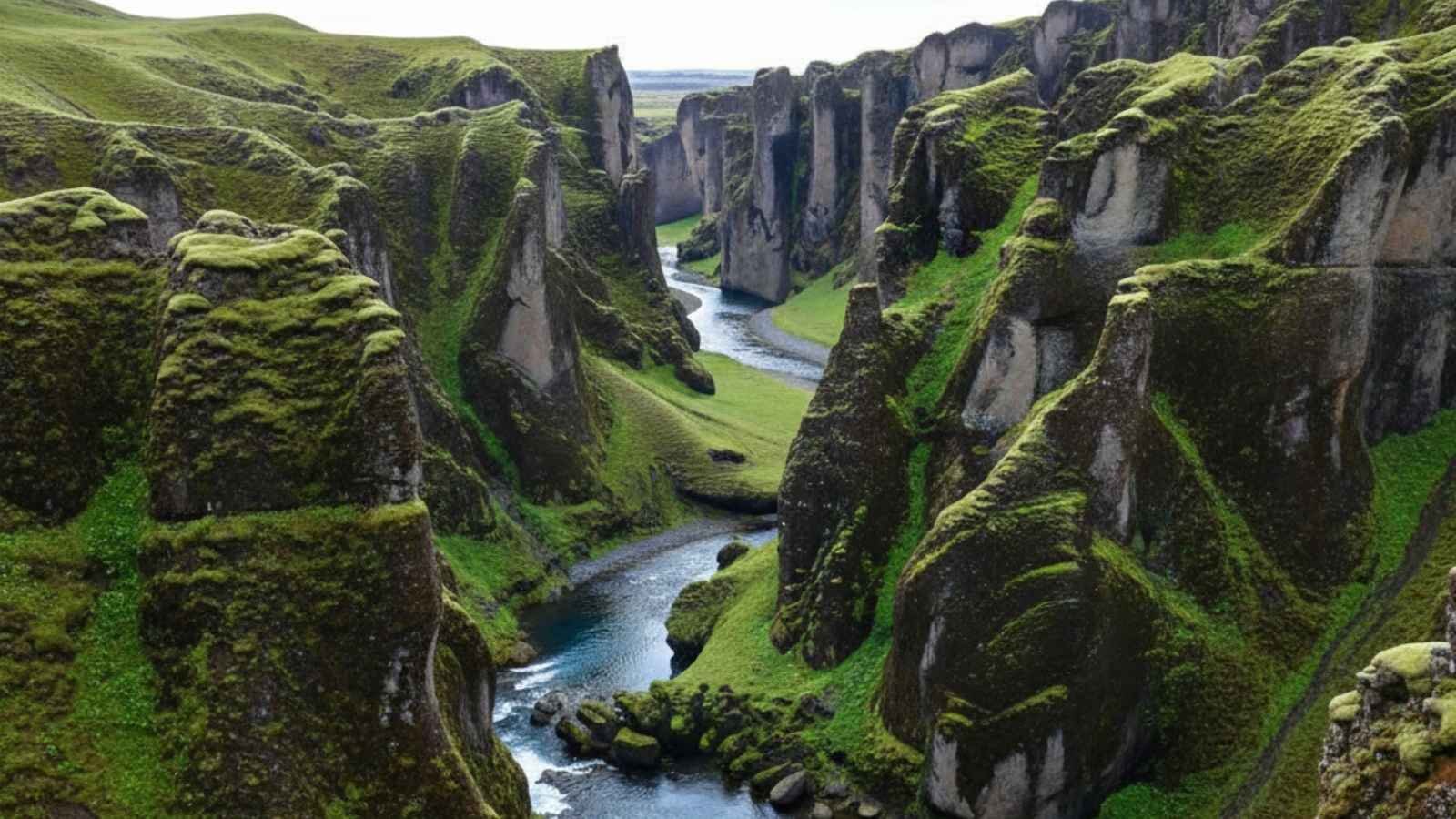
Fjaðrárgljúfur is one of those places that makes you wonder how nature carved something so intricate. This winding canyon stretches nearly two kilometers and drops over 100 meters deep, with the Fjaðrá River snaking through moss-covered cliffs. The result is a landscape that feels almost dreamlike — layers of green, gray, and gold forming natural terraces that look straight out of a fantasy set.
The best views come from the walking path along the canyon’s rim. It’s not a long hike, but every few steps reveal a new curve or cascade below. In the right season, the sunlight hits the moss in a way that makes it glow — a living, breathing color you won’t find anywhere else. It’s no surprise it gained fame after appearing in Justin Bieber’s I’ll Show You music video and later became an icon for travelers seeking Iceland’s hidden corners.
But beyond the fame, it’s the peaceful hum of the river below and the soft crunch of volcanic gravel underfoot that stick with you. It’s not grand in a typical sense — it’s intimate, sculpted, and quietly powerful.
Quick Notes:
- Best months to visit: May to September for lush greenery and easy access.
- Nearest town: Kirkjubæjarklaustur (about 10 minutes away).
- Trail details: 2 km round trip along the rim, easy to moderate.
- Travel tip: Respect marked paths — the moss is delicate and easily damaged.
- Famous moment: Featured in Justin Bieber’s I’ll Show You (2015).
4. Kirkjufell and Kirkjufellsfoss, Snæfellsnes Peninsula
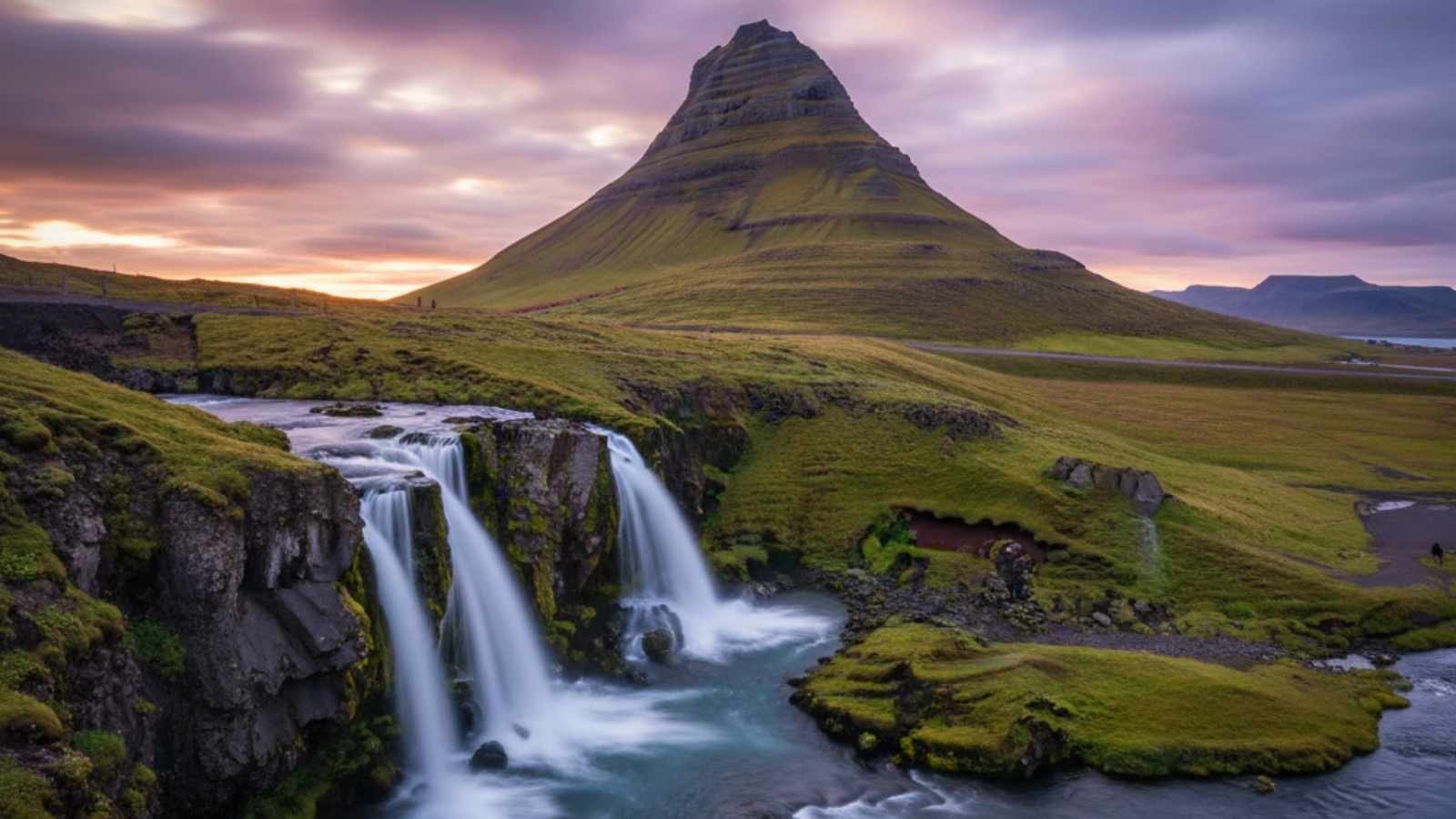
Kirkjufell — “Church Mountain” — is one of the most recognizable peaks in Iceland, and it’s easy to see why it’s often called the most photographed mountain in the country. Its near-perfect cone shape rises 463 meters high, mirrored by a small lake at its base, and complemented by the nearby Kirkjufellsfoss waterfall. Together, they form one of Iceland’s most iconic vistas.
This mountain has become a favorite for filmmakers and photographers alike. It’s famously featured in Game of Thrones as “Arrowhead Mountain,” and under the right light, it really does look like something from another realm. In summer, the area glows under the midnight sun, while in winter, the Northern Lights often streak above its peak — creating a surreal blend of earth and sky.
But beyond the cinematic fame, Kirkjufell is part of a quiet, rugged landscape on the Snæfellsnes Peninsula — often called “Iceland in Miniature” for its diversity. Spend a little time here, and you’ll get glaciers, waterfalls, beaches, and volcanic fields all in one day’s drive.
Quick Notes:
- Best months to visit: May to September for hiking and photography; November to March for aurora hunting.
- Nearest town: Grundarfjörður (5 minutes away).
- Hike info: Kirkjufell itself can be climbed, but only with experienced guides.
- Photography tip: Capture Kirkjufell with the waterfall in the foreground for the classic shot.
- On screen: Game of Thrones (Season 6–7).
5. Thingvellir National Park
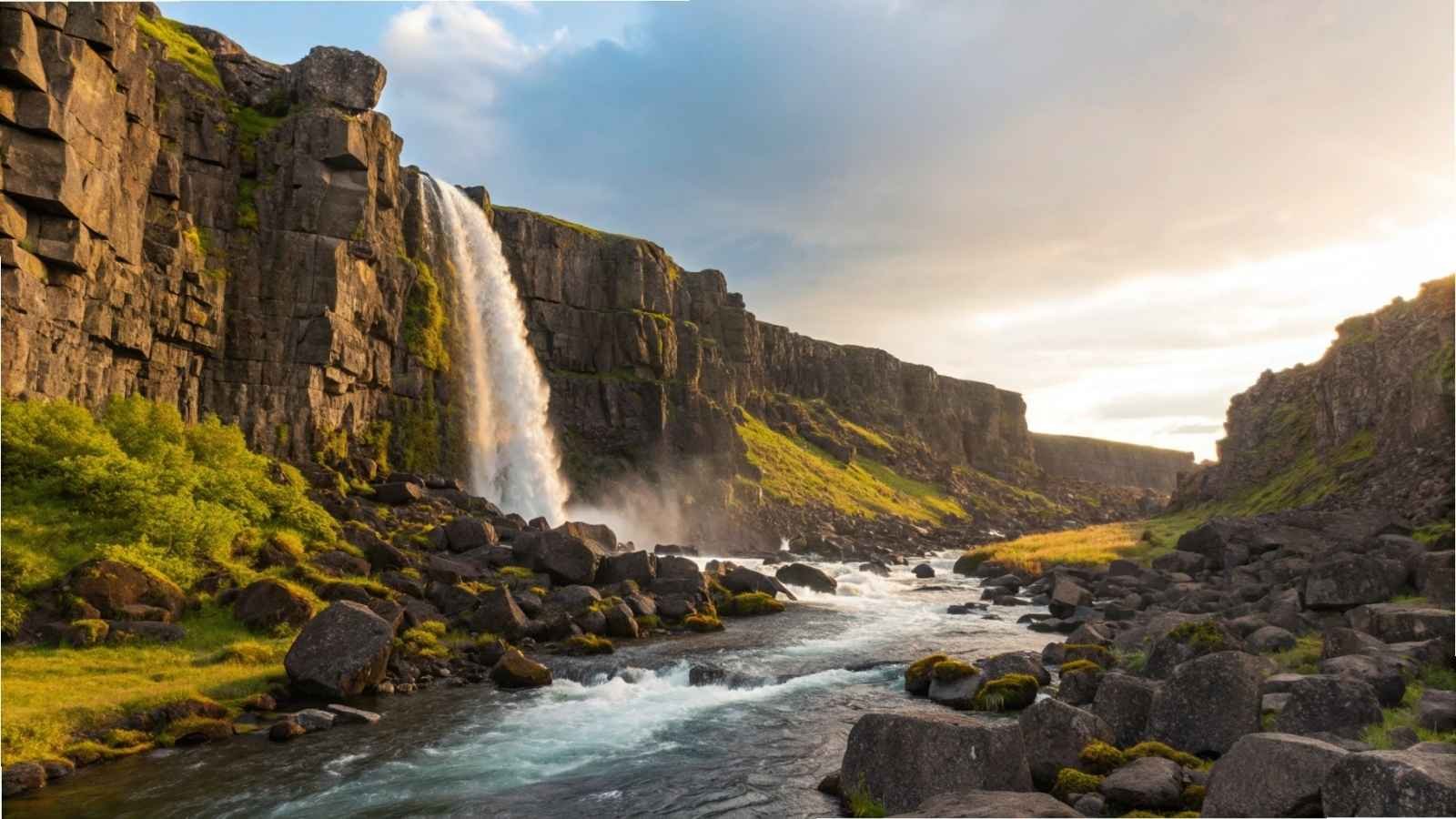
Þingvellir (Thingvellir) isn’t just visually stunning — it’s one of Iceland’s most historically and geologically significant sites. It’s where the North American and Eurasian tectonic plates meet, and you can actually walk through the rift valley that separates them. The cliffs, rivers, and fissures make it feel like the world is literally being pulled apart beneath your feet.
But this place holds deep cultural weight, too. It was the site of Iceland’s first parliament, founded in 930 AD, making it a UNESCO World Heritage Site. Today, visitors come not only for the scenery but also for the sense of standing in the heart of Icelandic history, where the country’s identity was shaped against a backdrop of raw nature.
Beyond the history, there’s pure beauty here: waterfalls like Öxarárfoss, the crystal-clear waters of Silfra fissure (where you can snorkel between continents), and sweeping views over Þingvallavatn, Iceland’s largest natural lake. It’s the kind of place that reminds you how geology, history, and myth can intertwine seamlessly in one landscape.
Quick Notes:
- Best months to visit: Year-round; summer for hiking, winter for icy drama.
- Nearest town: Laugarvatn or Selfoss.
- Top experience: Snorkeling in Silfra fissure — visibility up to 100 meters.
- UNESCO status: Listed as a World Heritage Site since 2004.
- Famous film scenes: Game of Thrones (The Eyrie’s Bloody Gate scenes).
6. Landmannalaugar Highlands
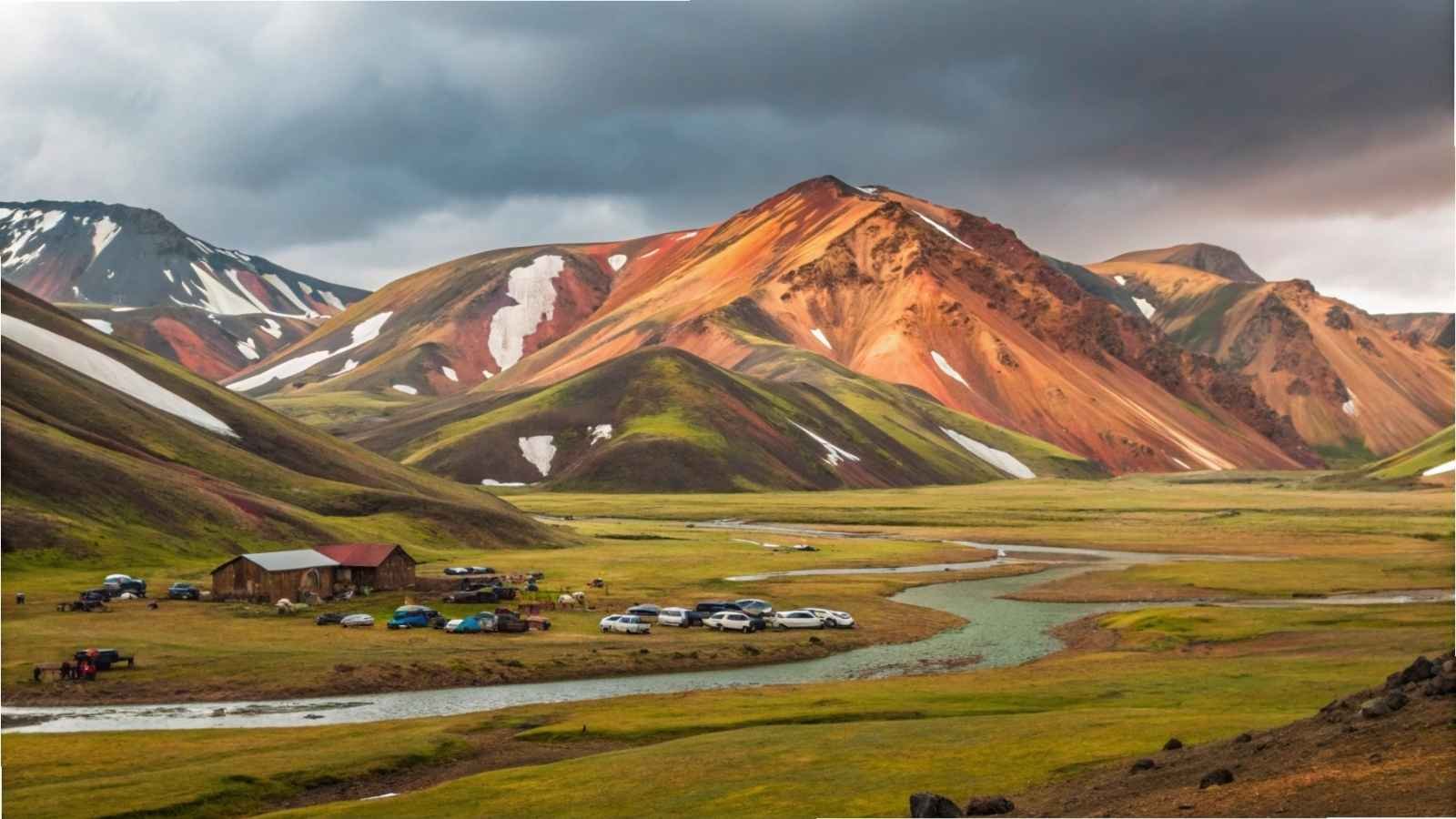
Landmannalaugar is the wild heart of Iceland — a swirl of rainbow-colored mountains, steaming geothermal vents, and lava fields that stretch to the horizon. The rhyolite hills here change color with every shift in light — rust, gold, pink, and green — giving the landscape a surreal, painted look. Hiking through these highlands feels like stepping onto another planet, especially when the mist lifts and the mountain ridges suddenly blaze with color.
This area is part of the Fjallabak Nature Reserve, and it’s one of the most beloved destinations for trekkers. Trails like the Laugavegur route begin here, winding through steaming valleys, obsidian lava flows, and hidden hot springs. At the end of the day, many travelers sink into the naturally warm river near the campsite — a simple ritual that feels deeply grounding after hours of exploring.
Despite its raw, remote vibe, Landmannalaugar is surprisingly accessible during the summer months. It’s the kind of place that rewards patience — every bend reveals a new palette, every step a new texture. It’s nature’s art gallery at its most dramatic.
Quick Notes:
- Best months to visit: Late June to early September (roads closed in winter).
- Access: 4×4 vehicle required via F208 route.
- Top activities: Hiking, geothermal bathing, camping.
- Stay: Mountain huts and campsites available.
- Travel tip: Weather changes fast — always pack layers and waterproof gear.
7. Skógafoss Waterfall
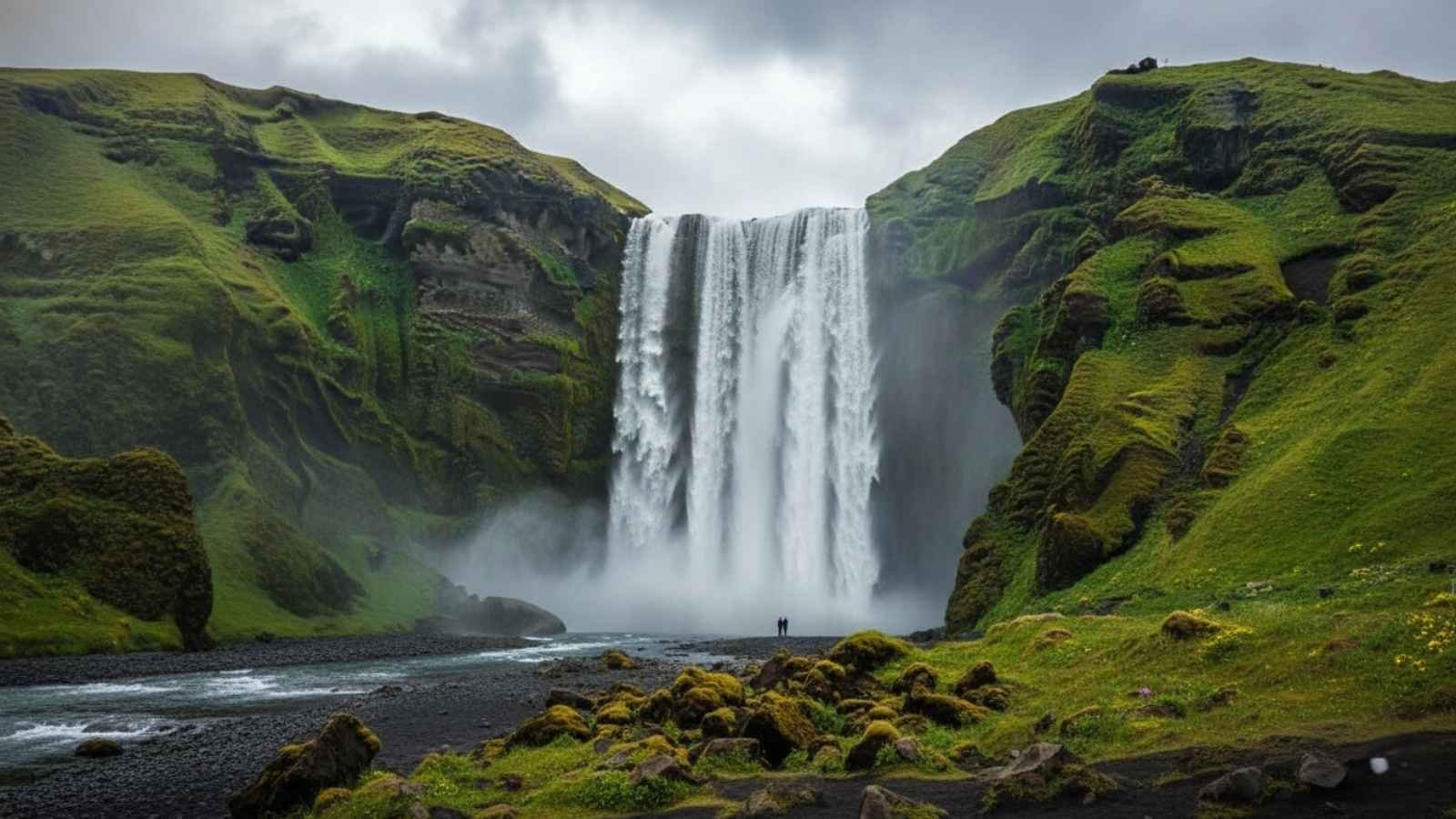
There’s power you can hear before you even see it — that’s Skógafoss. Dropping a roaring 60 meters in a perfect curtain of white water, it’s one of Iceland’s most striking waterfalls and a place that often leaves visitors standing in awe (and a bit wet). The mist that rises from its base often creates brilliant double rainbows, turning an already majestic view into something straight out of a myth.
You can stand at the bottom and feel the thunder of the falls shake through the ground — or climb the staircase to the top for sweeping views over the Skógar plains and coastline. For those craving a little adventure, the waterfall also marks the start of the Fimmvörðuháls Trail, one of Iceland’s most beautiful long hikes that passes between two glaciers.
Skógafoss has an undeniable cinematic quality — it’s simple, symmetrical, and unforgettably powerful. Whether you visit on a bright summer day or under moody clouds, it always commands your full attention.
Quick Notes:
- Best months to visit: May to September for greenery; October to March for icy views and fewer crowds.
- Nearest town: Skógar (right beside the falls).
- Hike option: Fimmvörðuháls Trail (to Thórsmörk).
- Photography tip: Bring a lens cloth — the mist is constant.
- Famous legend: A Viking settler’s hidden treasure is said to lie behind the falls.
8. Reynisfjara Black Sand Beach
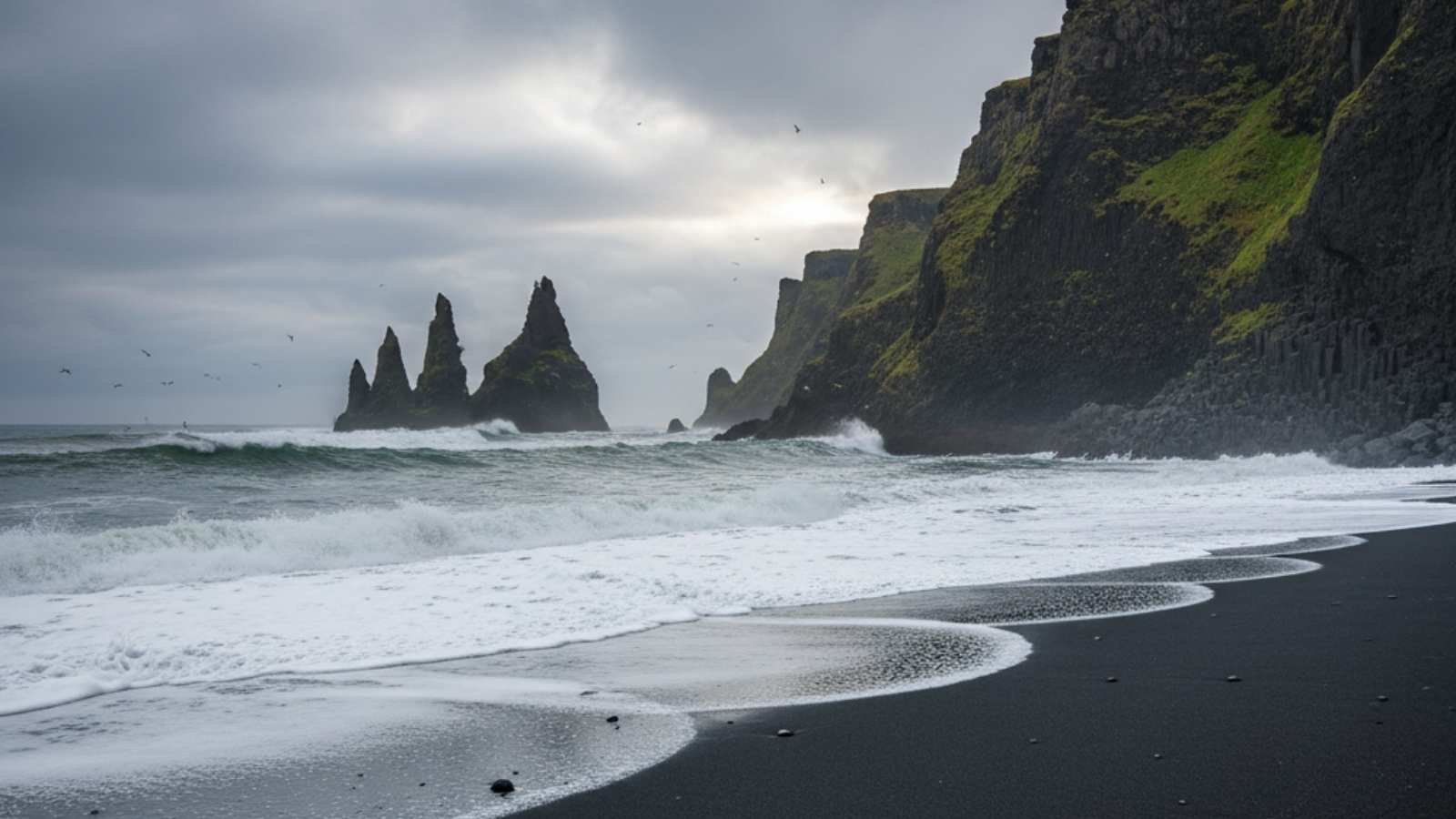
Reynisfjara is hauntingly beautiful — a stretch of jet-black sand flanked by basalt columns, sea caves, and the thunder of the Atlantic. Located near Vík on Iceland’s southern coast, this beach has an undeniable pull — it’s wild, raw, and hypnotic. The stark contrast between the black sand and white sea foam makes every wave feel alive.
The basalt stacks rising from the ocean, known as Reynisdrangar, have inspired centuries of folklore. Locals once said they were trolls turned to stone by sunlight — and standing there with the wind howling and waves crashing, it’s easy to see how the story stuck. The nearby basalt cave, Hálsanefshellir, with its geometric columns, feels almost man-made — a natural cathedral carved by time.
Reynisfjara is one of Iceland’s most photographed spots, but it’s also one of its most dangerous — sneaker waves can surge far up the beach unexpectedly. Respecting the sea’s power is key here. Watch from a safe distance, take it all in, and you’ll understand why filmmakers often return to this stretch of coastline to capture Iceland’s raw essence.
Quick Notes:
- Best months to visit: Year-round, though summer offers safer driving and milder weather.
- Nearest town: Vík í Mýrdal (10 minutes away).
- Safety tip: Stay at least 30 meters from the waves — they’re unpredictable.
- Nearby highlight: Dyrhólaey Arch for views over the coastline.
- On screen: Star Wars: Rogue One, Game of Thrones.
9. Askja Caldera and Víti Crater
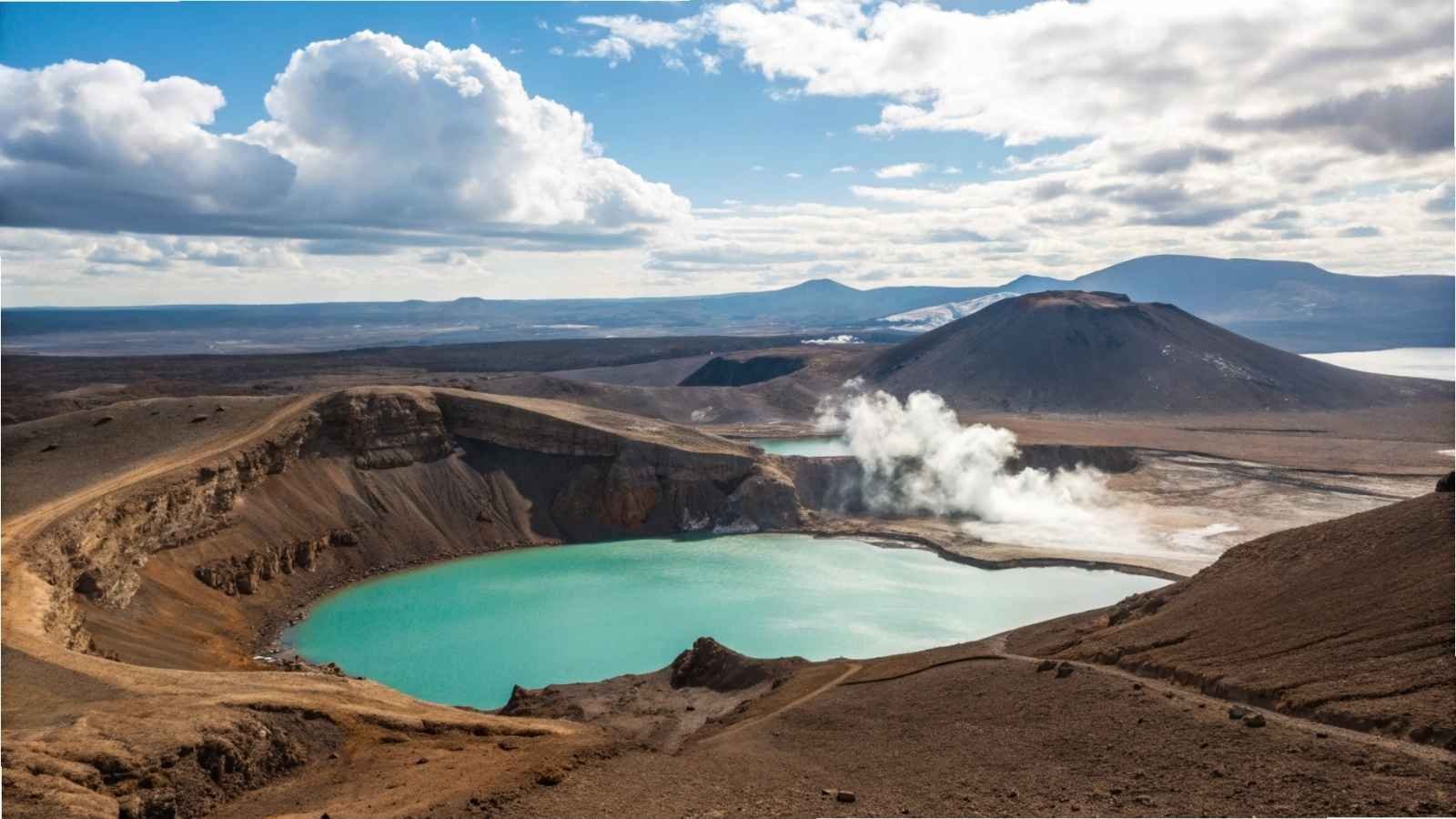
Tucked deep within Iceland’s remote interior, Askja Caldera and its baby-blue crater lake, Víti, feel like something the earth dreamed up mid-eruption. Surrounded by the desolate Dyngjufjöll Mountains, this geothermal area was formed by a massive volcanic collapse in the 19th century. What remains is a dramatic basin of lava fields, steaming vents, and a milky turquoise crater lake that glows even under gray skies.
Getting here is half the adventure — rough gravel roads and river crossings mean only 4x4s can make the trip, but the journey through Iceland’s Highlands is worth every bump. When you finally stand at Víti’s rim, the view feels surreal — like standing on another planet’s edge. Adventurous visitors sometimes descend the steep path to soak in the warm geothermal water below (though conditions vary, so it’s not always safe).
This is Iceland’s wild side — remote, unpredictable, and strikingly silent. Standing here, surrounded by a volcanic landscape that stretches to the horizon, you feel the pulse of the earth just beneath your boots.
Quick Notes:
- Best months to visit: July to early September (roads closed outside this window).
- Access: 4×4 required via F88 or F910.
- Top experience: Viewing Víti Crater and Askja Lake.
- Facilities: Minimal — bring your own supplies and fuel.
- Fun fact: NASA trained Apollo astronauts here for lunar missions.
10. Stuðlagil Canyon
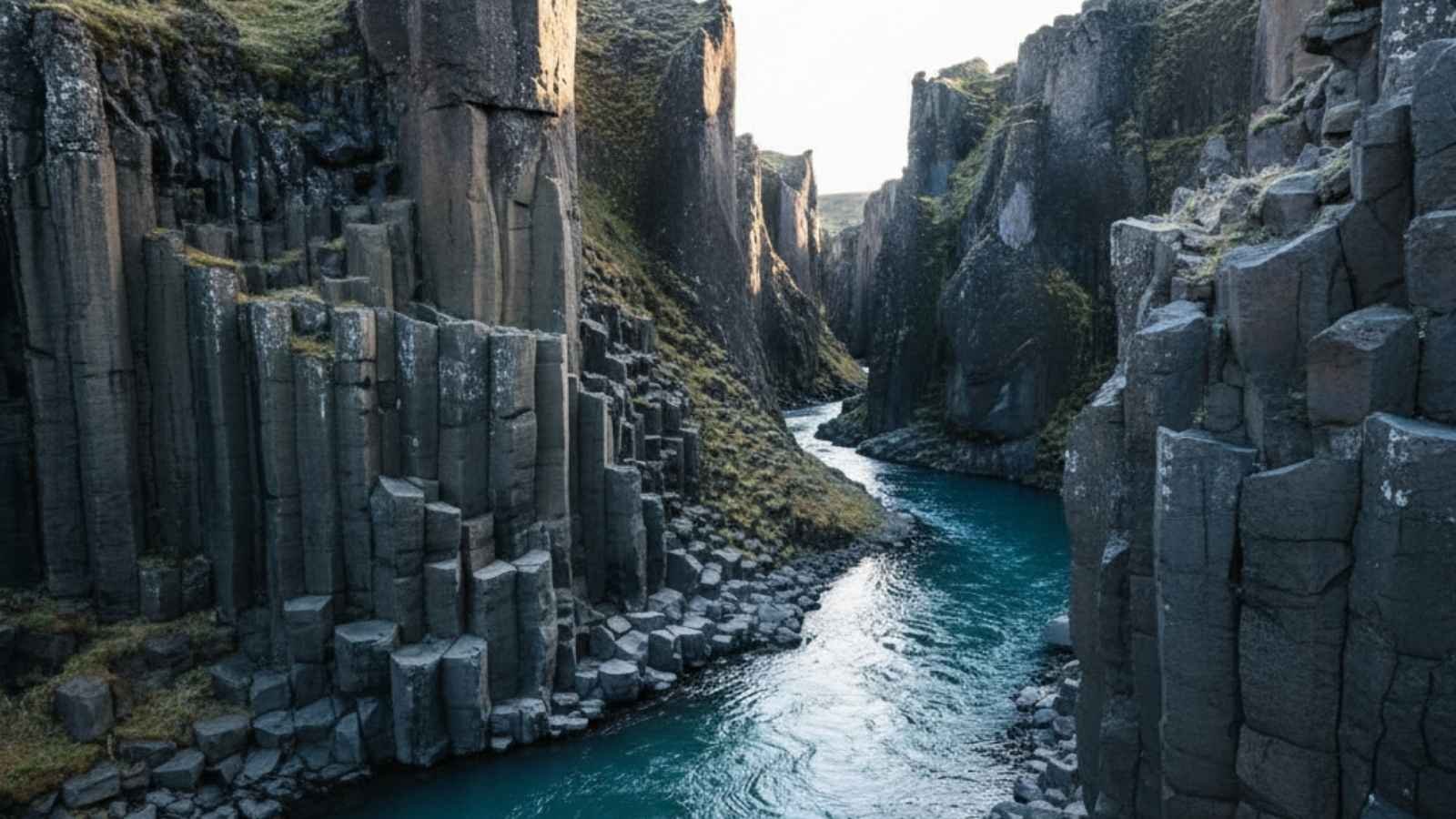
Stuðlagil wasn’t on most travelers’ radars until recently — now it’s one of Iceland’s most photographed natural wonders. Carved by the Jökla River, this canyon is lined with towering basalt columns that rise like organ pipes on either side of turquoise glacial water. The contrast between the dark volcanic rock and the unreal blue-green river is mesmerizing.
What makes it even more special is that it was hidden for centuries under glacial floods — only revealed after a hydroelectric project reduced the river’s flow. Today, a series of viewing platforms and trails allows visitors to get close enough to feel the canyon’s scale without damaging the fragile landscape.
On a sunny day, the water gleams like liquid jade, and the vertical basalt walls seem to glow from within. It’s one of those places that feels fresh and ancient all at once — a natural cathedral sculpted by time and water, now finally open to the world.
Quick Notes:
- Best months to visit: June to September for accessible trails and bright water color.
- Nearest town: Egilsstaðir (about 1 hour away).
- Access: Eastern viewpoint for easy access; western side for full canyon view (longer hike).
- Photography tip: Visit midday when sunlight hits the canyon directly.
- Best for: Off-the-beaten-path explorers and photographers.






